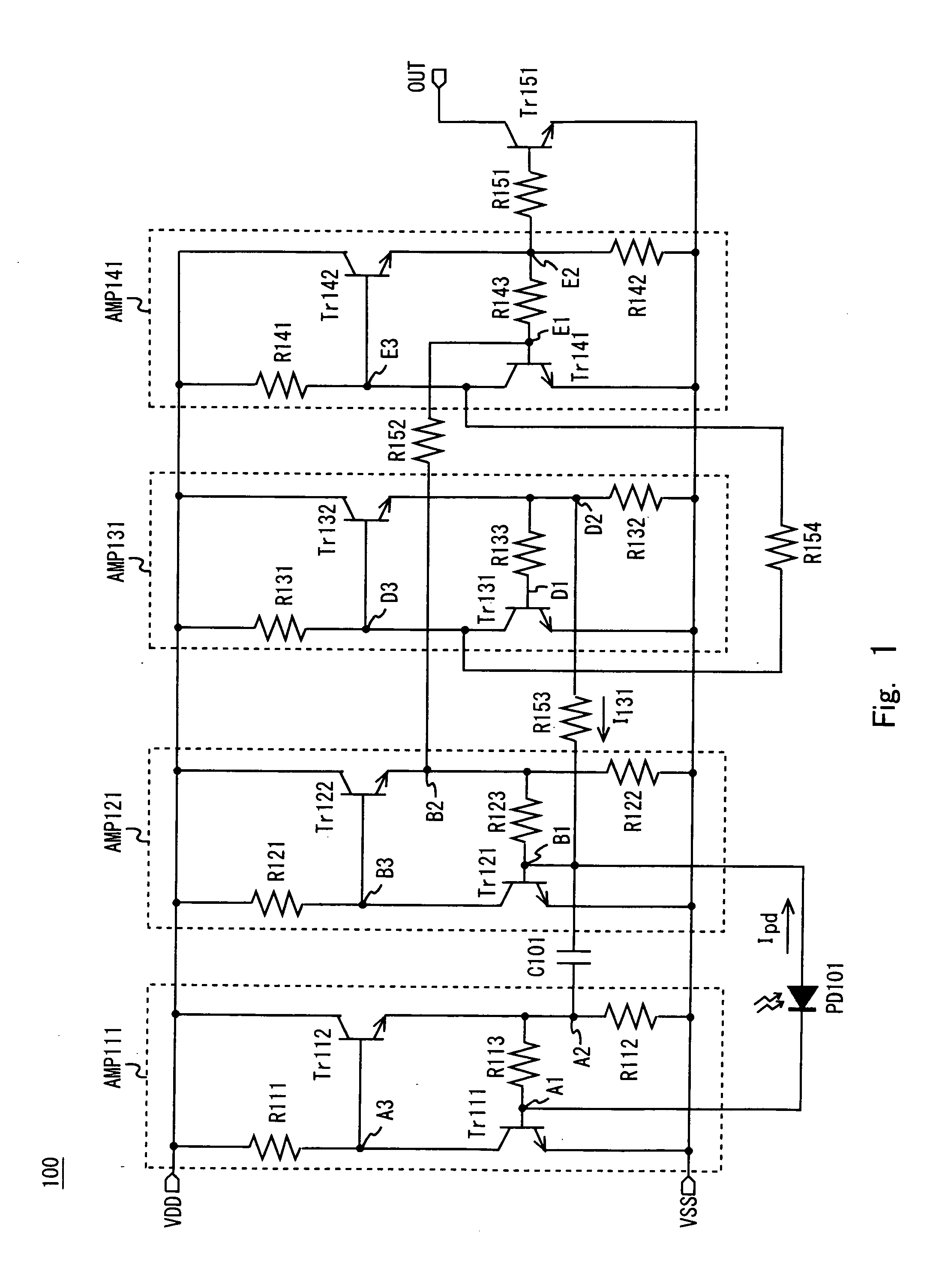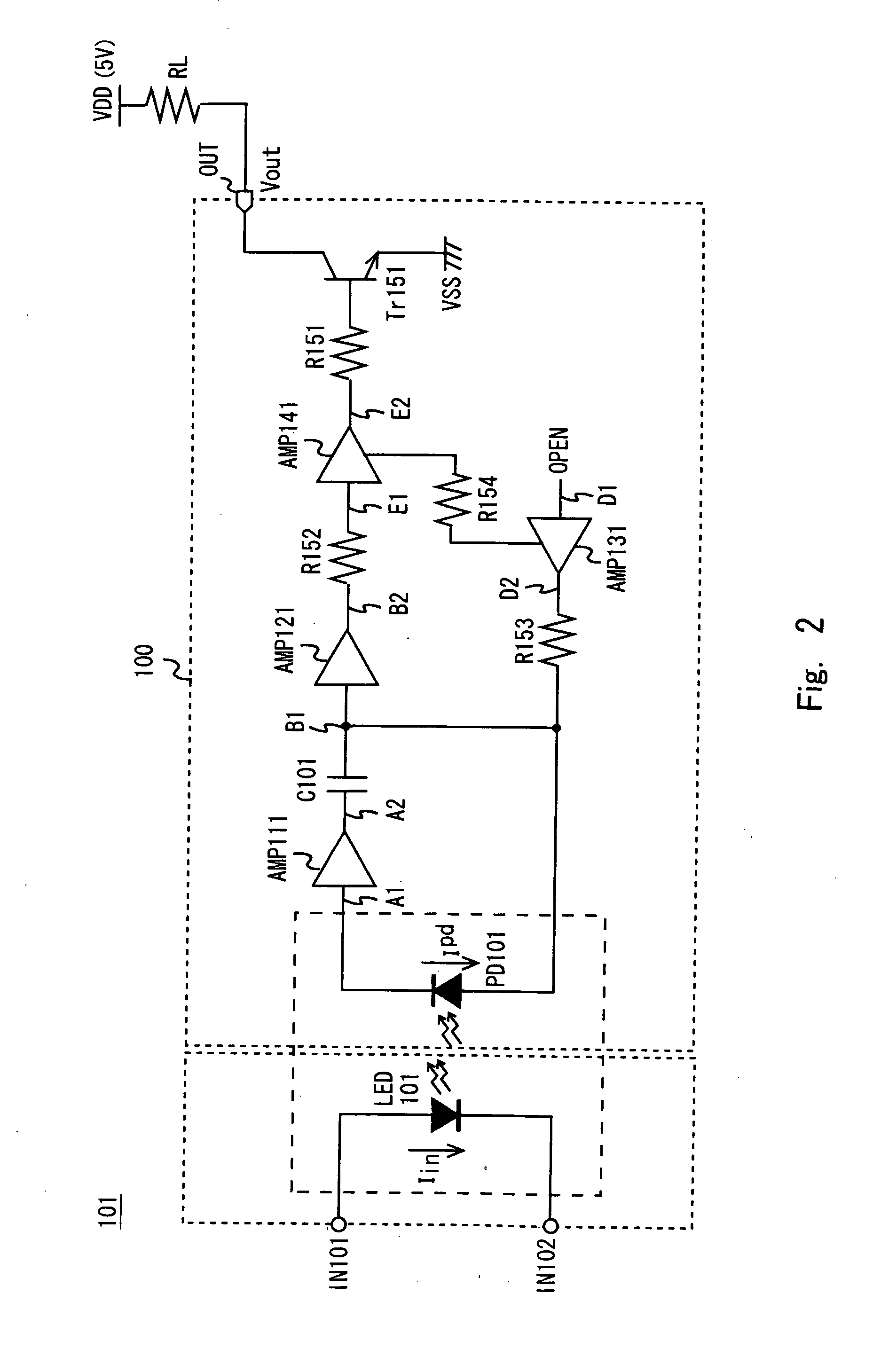Light receiving circuit
a light receiving circuit and light technology, applied in the field of light receiving circuits, can solve the problems of light receiving circuit b>2/b> to malfunction, increase in circuit size, and light receiving circuit has a hysteresis characteristic, so as to prevent output signal characteristics, increase circuit size, and hysteresis characteristic
- Summary
- Abstract
- Description
- Claims
- Application Information
AI Technical Summary
Benefits of technology
Problems solved by technology
Method used
Image
Examples
Embodiment Construction
[0035]Exemplary embodiments of the present invention will be described in detail below with reference to the accompanying drawings. In this exemplary embodiment, the present invention is applied to a light receiving circuit of a photocoupler. FIG. 1 shows an exemplary configuration of a light receiving circuit 100 according to this exemplary embodiment.
[0036]As shown in FIG. 1, the light receiving circuit 100 includes amplifiers AMP111, AMP121, AMP131, and AMP141, a photodiode PD101, a capacitor element C101, an NPN transistor Tr151, and resistor elements R151 to R153.
[0037]The amplifier AMP111 includes NPN transistors Tr111 and Tr112 and resistor elements R111 to R113. The NPN transistor Tr111 has a collector connected to a node A3, an emitter connected to a ground voltage terminal VSS, and a base connected to a node A1. The NPN transistor Tr112 has a collector connected to a power supply voltage terminal VDD, an emitter connected to a node A2, and a base connected to the node A3. ...
PUM
 Login to View More
Login to View More Abstract
Description
Claims
Application Information
 Login to View More
Login to View More - R&D
- Intellectual Property
- Life Sciences
- Materials
- Tech Scout
- Unparalleled Data Quality
- Higher Quality Content
- 60% Fewer Hallucinations
Browse by: Latest US Patents, China's latest patents, Technical Efficacy Thesaurus, Application Domain, Technology Topic, Popular Technical Reports.
© 2025 PatSnap. All rights reserved.Legal|Privacy policy|Modern Slavery Act Transparency Statement|Sitemap|About US| Contact US: help@patsnap.com



